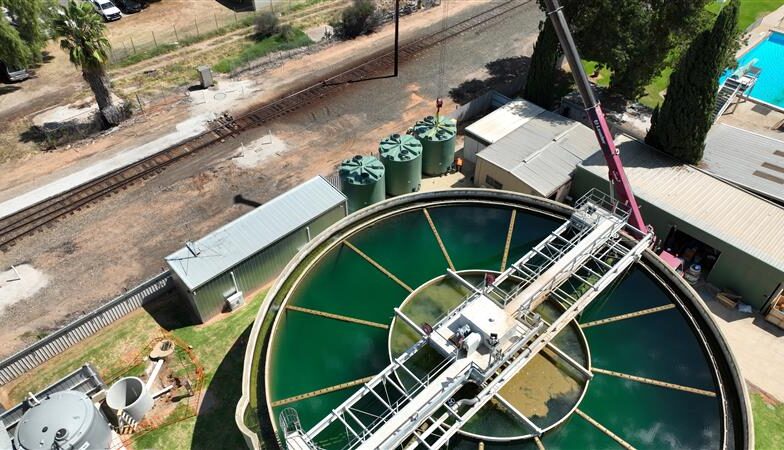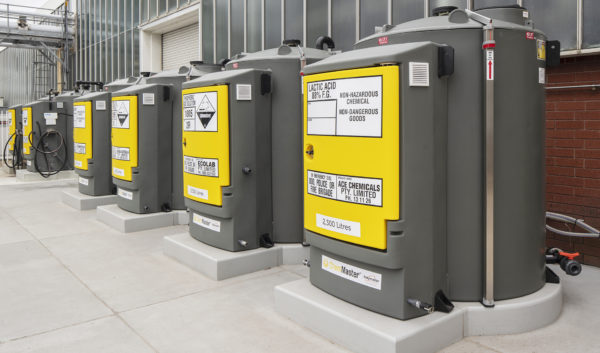In this blog, we will explore the properties and applications of Sulphuric Acid and the importance of proper storage and handling to ensure safety. We will delve into the various uses of Sulfuric Acid and how it has revolutionized different industries. We will also examine the risks and hazards associated with Sulphuric Acid and provide guidelines for proper storage and handling. So, if you’re looking to understand more about Sulphuric Acid and its applications, buckle up, and let’s dive in.
Sulphuric Acid is a highly reactive and hazardous chemical with numerous industrial applications. Its ability to react with various substances makes it an essential component in producing a wide range of products, including fertilizers, detergents, and pharmaceuticals.
This chemical is sold in concentrations ranging from 30% to 98%, with the most common concentration being 50%, 70% and 98%. Despite its many uses, Sulphuric Acid can pose significant risks to human health and the environment if not handled and stored correctly. Therefore, the sale and use of Sulphuric Acid is tightly regulated in Australia, and users are required to have appropriate training and safety procedures in place to handle this chemical safely.
But let’s explore the properties and applications of Sulphuric Acid and the importance of proper storage and handling to ensure safety.
What is the chemical Sulphuric Acid?
Sulphuric Acid is a highly corrosive and dense chemical commonly used in various industrial processes. It is also known as an oil of vitriol, and its chemical formula is H2SO4.
It is one of the world’s most widely used industrial chemicals, with applications in producing fertilizers, detergents, dyes, and pharmaceuticals, among others. However, due to its hazardous properties, proper handling and storage of Sulphuric Acid is critical to ensure the safety of workers and the environment.
What are the uses of Sulphuric Acid?
Sulfuric Acid has a range of applications in various industries across not only Australia but the world. Here are some of the common uses and industries of sulfuric Acid:
- Water Treatment: Sulphuric Acid plays a crucial role in the water treatment process as it is used to lower the water’s pH, treat wastewater, and purify drinking water.
- Chemical industry: Sulphuric Acid is a key component in producing a wide range of chemicals, including detergents, synthetic fibres, dyes, and pharmaceuticals.
- Mining Industry: Sulphuric Acid is used in the mining industry to extract metals such as copper, zinc, and nickel. It is used in the leaching process to separate metals from their ores.
- Pulp and paper industry: The production of paper and pulp, where it is used to break down wood fibres and remove impurities.
- Food Industry: Maybe used as a catalyst in producing certain food additives, such as citric acid and aspartame. However, these applications are highly regulated, and the final products must be thoroughly washed and purified to ensure the absence of residual Sulfuric Acid. Therefore, any use of Sulfuric Acid in the food industry must comply with stringent regulations and guidelines.
- Fertilizers: The production of phosphoric acid, a key component of fertilizers and the production of ammonium sulphate and other fertilizers.
How do you safely store Sulphuric Acid?
Sulphuric Acid is a highly corrosive and hazardous chemical that must be stored and handled carefully. When storing this chemical in poly tanks, it is important to take proper precautions to ensure safe and effective storage.
Guidelines for storing Sulphuric Acid in Polymaster Self-Bunded tanks
- To ensure safe Sulphuric Acid storage, choosing an appropriate poly tank with secondary containment is essential. For instance, Polymaster Self-Bunded tanks are specifically designed to store over 1900+ chemicals, including corrosive substances like sulfuric acid. With their tank within a tank design, they offer 110% bund capacity in case of spills or leaks. Moreover, these tanks can be customized with various accessories, including a vented lid that facilitates the release of pressure and prevents fumes accumulation.
- Ensure proper ventilation: This chemical releases fumes that can be harmful if inhaled. Therefore, storing Sulfuric Acid in a well-ventilated area is important to prevent the build-up of these toxic fumes. The storage area should also be equipped with a ventilation system to ensure the safe release of fumes.
- Monitor temperature: Always store in a cool, dry place to prevent reactions or decomposition. The storage area should be kept at a temperature between 0°C and 40°C to prevent any temperature-related issues that could harm anyone on-site.
- Label and mark the tank: All tanks used for storing Sulfuric Acid should be labelled with the appropriate hazard warning symbols and markings. The label should always include the chemical name, concentration, and storage date.
- Regularly inspect the tank: Regular inspections of the tanks should be conducted to ensure their structural integrity and prevent any harm to the surrounding environments.
Polymaster’s tanks are designed to withstand the corrosive properties of chemicals from a list of 1900+ that you can find in our Chemical Compatibility Chart and are resistant to cracking, leaking, and UV degradation.
What are the environmental impacts of SulphuricAcid?
Sulfuric Acid can have various environmental impacts if released into the environment or if it is not properly managed during its production or use. Here are some of the environmental impacts that can come from:
- Acidification of soil and water: It can cause acidification of soil and water bodies if it is released into the environment. This can have detrimental effects on the surrounding environment by basically making ‘Acid Soil’.
- Air pollution: This is a major source of sulphur dioxide emissions, which can lead to air pollution and Acid rain. Acid rain can cause damage to buildings, infrastructure, and crops and can also harm aquatic life in lakes and rivers.
- Contamination of water resources: This can contaminate water resources if not correctly managed during production or use. This can contaminate drinking water and other water resources, which can have serious health impacts on the environment around us, including humans and animals.
- Health impacts: Exposure to sulfuric Acid can have significant health impacts, including respiratory problems, skin irritation, and eye damage. It is important to handle sulfuric Acid with caution and to follow proper safety protocols to prevent any negative health impacts.
When it comes to this corrosive chemical, proper storage is essential to keep everyone on-site safe as well as the surrounding environment. It can cause severe burns and permeant damage to the eyes, skin and even your lungs. So it is important when storing this chemical it is done correctly.
Additional resources available
If you are in the market for a chemical tank to hold and store corrosive chemicals such as Sulfuric Acid and need more information, we have available a whole suite of resources online for our Self-Bunded Tanks and other accessories, including;
- GA/PDF drawings for all tanks
- Step files to easily incorporate into your CAD files
- Datasheets on each tank, including different SG and Chemical Grade material
Always refer to the SDS (Safety Data Sheet) before using or handling Sulfuric Acid, and if in doubt, seek advice from your supplier.
Our chemical team are happy to help you navigate through your requirements. Simply call 1300 062 064.
More Similar News
View all News
Why a Self-bunded tank outperforms a Single-Walled Tank!

Sludge Control at Swan Hill Water Treatment Plant: How Our Tanks Solve Overflow Challenges



